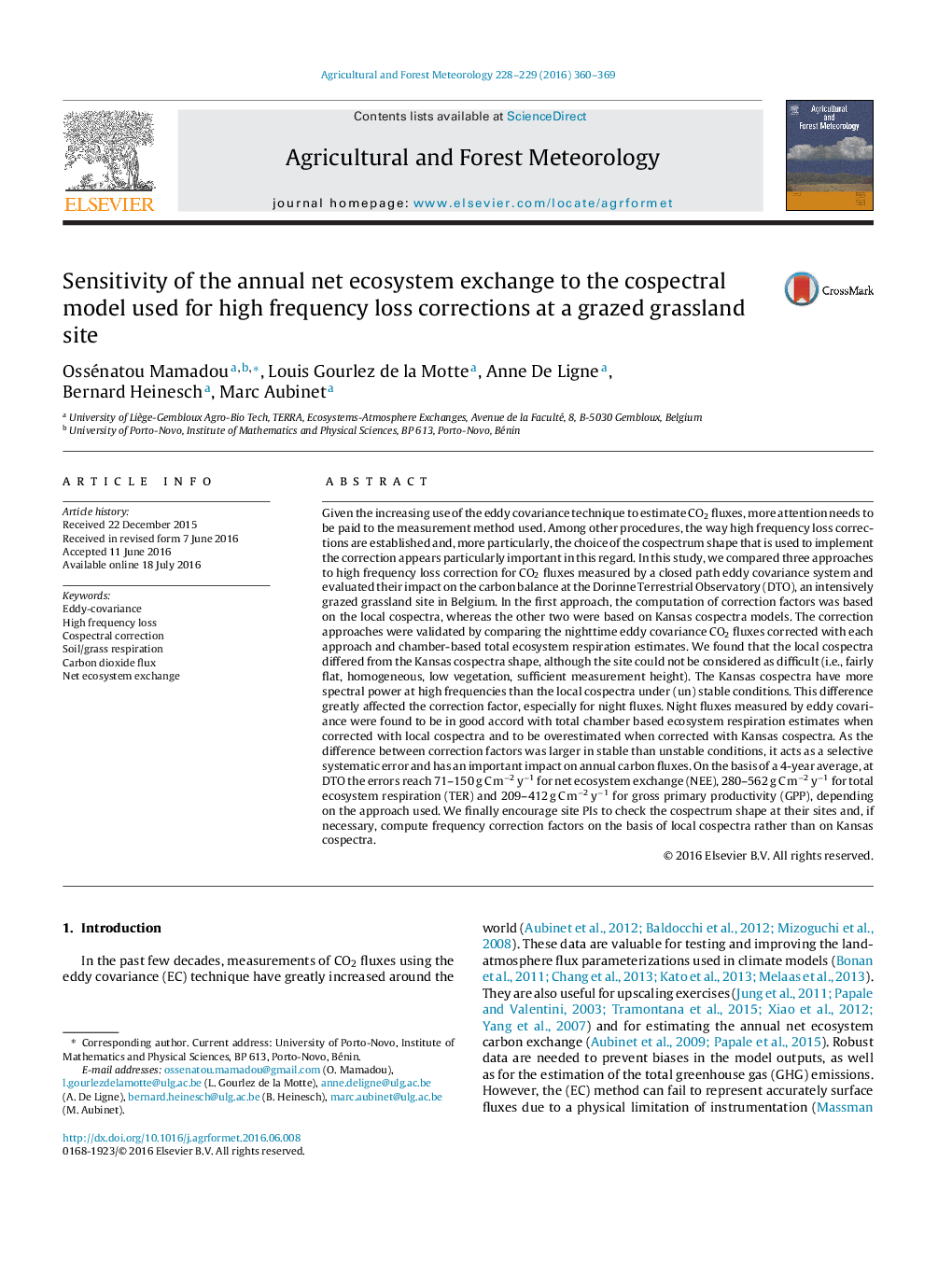| کد مقاله | کد نشریه | سال انتشار | مقاله انگلیسی | نسخه تمام متن |
|---|---|---|---|---|
| 6458244 | 158307 | 2016 | 10 صفحه PDF | دانلود رایگان |
- The shape of the local cospectra differed from the Kansas prediction.
- The choice of the reference cospectrum was found to affect CO2 fluxes significantly.
- The impact was larger at night than during the day.
- The high frequency loss correction was more realistic when based on local cospectra.
- The choice of Kansas cospectra reversed the CO2 balance from a C sink to a C source.
Given the increasing use of the eddy covariance technique to estimate CO2 fluxes, more attention needs to be paid to the measurement method used. Among other procedures, the way high frequency loss corrections are established and, more particularly, the choice of the cospectrum shape that is used to implement the correction appears particularly important in this regard. In this study, we compared three approaches to high frequency loss correction for CO2 fluxes measured by a closed path eddy covariance system and evaluated their impact on the carbon balance at the Dorinne Terrestrial Observatory (DTO), an intensively grazed grassland site in Belgium. In the first approach, the computation of correction factors was based on the local cospectra, whereas the other two were based on Kansas cospectra models. The correction approaches were validated by comparing the nighttime eddy covariance CO2 fluxes corrected with each approach and chamber-based total ecosystem respiration estimates. We found that the local cospectra differed from the Kansas cospectra shape, although the site could not be considered as difficult (i.e., fairly flat, homogeneous, low vegetation, sufficient measurement height). The Kansas cospectra have more spectral power at high frequencies than the local cospectra under (un) stable conditions. This difference greatly affected the correction factor, especially for night fluxes. Night fluxes measured by eddy covariance were found to be in good accord with total chamber based ecosystem respiration estimates when corrected with local cospectra and to be overestimated when corrected with Kansas cospectra. As the difference between correction factors was larger in stable than unstable conditions, it acts as a selective systematic error and has an important impact on annual carbon fluxes. On the basis of a 4-year average, at DTO the errors reach 71-150 g C mâ2 yâ1 for net ecosystem exchange (NEE), 280-562 g C mâ2 yâ1 for total ecosystem respiration (TER) and 209-412 g C mâ2 yâ1 for gross primary productivity (GPP), depending on the approach used. We finally encourage site PIs to check the cospectrum shape at their sites and, if necessary, compute frequency correction factors on the basis of local cospectra rather than on Kansas cospectra.
Journal: Agricultural and Forest Meteorology - Volumes 228â229, 15 November 2016, Pages 360-369
